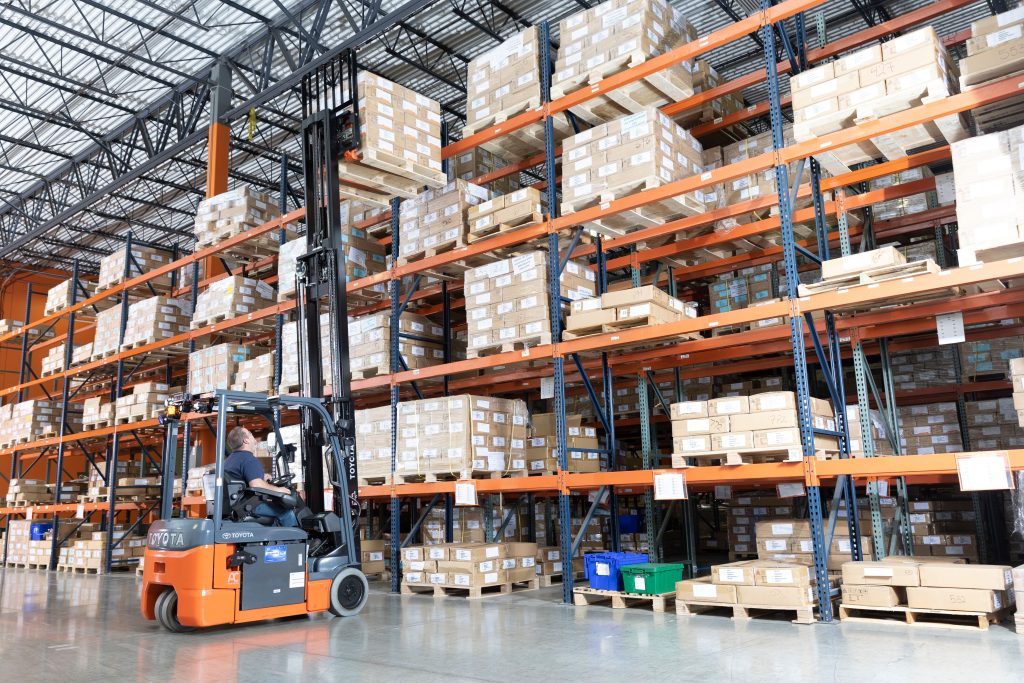
Efficiency is the heartbeat of a thriving warehouse, and its successful rhythm depends on a harmonious blend of processes, personnel, and precision. Among the key factors that orchestrate this symphony of efficiency, having a properly trained employee directly impacts your efficiency the most. In this article, we delve into the transformative impact of worker training on warehouse efficiency, exploring how well-trained employees contribute to organized workflows, accurate stock management, and a safer working environment.
The Ripple Effect of Organizational Knowledge
In the intricate dance of warehouse operations, even the smallest misstep can cause a ripple effect that disrupts the entire flow. Picture this scenario: a pallet placed in an incorrect location, seemingly innocuous, but with far-reaching consequences. Suddenly, the hunt to locate the errant pallet begins, leading to precious time wasted and a puzzle-like challenge for inventory management. This seemingly minor action snowballs into a chain reaction of inefficiency.
Enter the trained worker – armed with comprehensive knowledge of warehouse layout and organization. Equipped with this understanding, they navigate the labyrinth of racks and shelves with finesse, ensuring each item finds its designated spot. The result? A meticulously organized warehouse where products are accessible, and inventory management becomes a streamlined task. This efficiency translates into saved time, reduced errors, and improved picking accuracy.
Quality Over Quantity: Trained Workers as Efficiency Catalysts
The old adage “quality over quantity” finds its resonance in the realm of warehouse management. A single trained worker can wield a remarkable impact, often surpassing the productivity of two or three untrained counterparts. Why? The answer lies in the understanding of the warehouse’s heartbeat – its layout and flow. A worker trained in the art of picking and putting away products knows the optimal routes, the strategic storage spots, and the intricate choreography of the warehouse’s ebb and flow.
As they navigate these pathways with confidence, they outpace their untrained peers, optimizing the speed and accuracy of their tasks. Their knowledge becomes a force multiplier, increasing output while reducing errors. The result? A warehouse that operates like a well-oiled machine, where every action contributes to the overall efficiency tapestry.
Safety: A Cornerstone of Efficiency
Efficiency doesn’t merely reside in speed; it encompasses safety and well-being. Operator safety training is not a mere formality but a cornerstone of warehouse efficiency. Accidents not only lead to immediate setbacks but can trigger a domino effect of operational disruptions. A single accident could render a worker unavailable or, in more severe cases, necessitate a complete warehouse shut down for investigation and cleanup.
The antidote to this disruption is comprehensive operator safety training. This training equips employees with the knowledge and skills to navigate potential hazards, handle equipment safely, and respond effectively to emergencies. The investment in safety training reaps dividends, fostering a culture of security and responsibility. With fewer accidents and smoother crisis management, productivity remains uninterrupted, ensuring an efficient workflow.
In the intricate tapestry of warehouse management, worker training emerges as a vibrant thread that weaves together efficiency, accuracy, and safety. The impact of well-trained employees reverberates through the organization, transforming warehouses into hubs of streamlined operations and organized excellence. Whether it’s through creating a harmonious organizational layout, amplifying productivity through trained workers, or upholding safety as a non-negotiable priority, the power of worker training to enhance warehouse efficiency cannot be overstated. As industries evolve and demands heighten, the investment in worker training will pay many dividends over time as it helps workers be more efficient in the warehouse environment.
